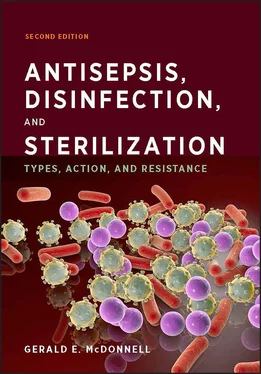TABLE 1.11 Cell wall structures in mycobacteria and related organisms
| General type |
Key characteristics |
Example(s) |
Significance |
| Mycobacteria |
Slowly to very slowly growing; acid-fast; generally gram positive; aerobic; rod shaped but also pleomorphic or filamentous |
Mycobacterium |
|
| • Slowly growing (weeks to months) |
|
| M. tuberculosis, M. bovis |
Cause tuberculosis, a respiratory tract disease, in humans and animals |
| M. leprae |
Causes leprosy, a skin and nerve disease |
| M. avium |
Ubiquitous in nature, including water, dust, and soil; can cause disease in poultry, swine, and immunocompromised humans |
| • Rapidly growing (3 to 7 days) |
|
| M. chelonae, M. gordonae |
Can be found as water contaminants and have been identified as pseudoinfections; some strains show high resistance to some biocides |
| M. fortuitum |
Identified in a variety of immunocompromised patient infections, including wound infections |
| Actinomycetes |
Filamentous; gram negative; pleomorphic |
Nocardia |
Widely distributed, including in soil; some pathogenic, including N. asteroides in pulmonary and systemic infections in humans |
| Irregular rods |
Irregular rods; gram positive |
Corynebacterium |
Obligate parasites on skin and mucous membranes; pathogenic strains include C. diphtheriae |
Archaea are prokaryotic but are phylogenetically distinct from eubacteria. They are a diverse group that has not been widely studied due to difficulties in culturing them from various environments. They are considered briefly, as many survive in severe environments that may be biocidal to other microorganisms and offer some interesting, if not rare, examples of microbial resistance mechanisms (see sections 8.3.9and 8.3.10). It should be noted that bacteria and other microorganisms can survive and even multiply over a quite wide range of conditions, including temperature, pH, and the presence or absence of oxygen (aerobic or anaerobic). Those that grow under extremes of these conditions are referred to in combining form as “-philes”; for example, thermophiles (or thermophilic microorganisms) can survive at high temperatures, psychrophiles grow in cold environments, halophiles survive extreme salt conditions, and acidophiles or alkaliphiles are found in low- or high-pH environments (for further discussion, see section 8.3.10). In general, the archaea are found under extreme conditions within these ranges. For this reason, they are often referred to as extremophiles and can be considered to form four general groups: thermophiles (which survive in extreme high or low temperatures), halophiles (which survive in extreme high-salt concentrations), methanogens (which can survive under unique anaerobic conditions), and barophiles (which can survive high hydrostatic pressure). Examples are given in Table 1.12.
It should be noted that in many cases these extreme conditions are actually required for the growth of archaea. As an example, Pyrococcus cells have an optimum temperature of 100°C but require at least 70°C for growth. Further, halobacteria, such as Halobacterium , require a minimum salt level of 1.5 M for growth.
TABLE 1.12 Examples of extremophile archaea
| Type |
Description |
Habitat example(s) |
Typical conditions |
Example(s) |
| Halophiles |
Grow under high-saline conditions |
Salt or soda lakes |
9–32% NaCl |
Halobacterium, Natronobacterium |
| Thermophiles |
Grow at high temperatures, some under extreme acidic or basic conditions |
Hydrothermal vents, hot springs |
50–110°C |
Sulfolobus, Thermococcus, Pyrococcus |
| Methanogens |
Strict anerobes that produce methane (CH 4) gas from CO 2and other substrates |
Sediments, bovine rumens (anaerobic digesters) |
Strictly anaerobic; H 2and CO 2used for CH 4production |
Methanobacterium, Methanospirillium |
| Barophiles (or piezophiles) |
Grow optimally at high hydrostatic pressure |
Deep sea |
Low temperature (2–3°C) and high pressure (> 100 kPa, e.g., 20–100 MPa) |
Methanococcus |
Structurally, the archaea are similar to eubacteria ( Table 1.3), but they present diverse cellular mechanisms that allow survival under extreme conditions. Overall, they have unique lipids (generally short-chain fatty acids) in their cell membranes, but also polysaccharides and/or proteins in their cell walls that differ from those of eubacteria. It is interesting that, similar to the mycoplasmas (see section 1.3.4.1), some archaea have no associated cell wall. Examples are Thermoplasma species, which contain a thick, unique cell membrane, which allows the growth and metabolism of the genus (see section 8.3.10). The cell membrane contains a unique LPS consisting of mannose-glucose polysaccharide attached to lipid molecules and glycoproteins that gives the membrane greater rigidity and temperature resistance. Some archaea have a surface structure similar to that of eubacteria, with a cell membrane bounded by a cell wall. The cell wall may contain a polysaccharide similar to peptidoglycan called pseudopeptidoglycan, with alternating N -acetylglucosamine and N -acetylalosaminuronic acid. Others do not have a peptidoglycan but a cell wall made up of proteins and polysaccharides. An example is the halophilic Halobacterium , which contains a salt-stabilized glycoprotein cell wall. Others species produce an external proteinaceous layer, similar to bacterial capsules (see section 8.3.7), which is known as an S-layer. In many methanogens, S-layers consisting of a crystalline structure of proteins may be found.
Viruses are considered simple forms of life, consisting of a nucleic acid surrounded by protein. They are much smaller than bacteria (<0.5 μm) and are obligate intracellular parasites that depend on host cells, both prokaryotes and eukaryotes, for replication. They can be classified by a variety of methods, including size, structure, presence or absence of a lipid-containing envelope, type of nucleic acid, diseases they cause, and cell types they infect. In the consideration of biocides, viruses can be classified as being nonenveloped (or naked) or enveloped ( Fig. 1.10).
Nonenveloped viruses consist of a nucleic acid surrounded by a protein-based capsid and are considered hydrophilic. Enveloped viruses also contain an external lipid bilayer envelope, which can include proteins (usually glycoproteins, or proteins with linked carbohydrate groups). Central to all viral structures is the nucleocapsid, consisting of the nucleic acid (which can be single- or double-stranded DNA or RNA) protected by a protein capsid. The capsid is made of individual capsomeres, which consist of single or multiple protein types. Examples of nonenveloped viruses are the parvoviruses. Parvoviruses consist of 50% DNA and 50% protein, and the capsid is composed of three proteins that are responsible for their considerable resistance to disinfection. In addition, some viruses contain proteins, associated within the capsid or externally within an outer envelope, which play a role in the infection or replication of the virus particle in a susceptible host. An example is the adenoviruses, which are nonenveloped DNA viruses with a capsid containing 252 capsomeres of at least 10 different proteins, which are involved in viral structure, cell binding, and penetration; in addition, they have slender glycoproteins projecting from the capsid. Enveloped viruses are more complicated in their structure. Herpesviruses, for example, have an inner core consisting of DNA wound around a proteinaceous scaffold and surrounded by a capsid of 162 capsomeres, a protein-filled tegument, and finally an outer lipophilic envelope containing numerous glycoproteins and evenly dispersed surface spikes. Another group is the enveloped orthomyxoviruses, which contain two envelope-associated surface proteins that are involved in virus infectivity: hemagglutinins, which bind the virus to the recipient cell, and neuraminidases, which break down muramic acid in the protective mucopolysaccharide layer, which is found on the surfaces of target epithelial cells and allows contact with sensitive cellular receptor proteins. Additional proteins can be associated with the viral nucleic acid, including nucleic acid polymerases; for example, retroviruses are RNA viruses that contain reverse transcriptases that allow the generation of DNA from the viral RNA molecule, which is subsequently transcribed and translated to produce viral proteins in the host.
Читать дальше












